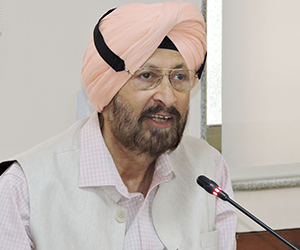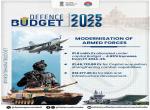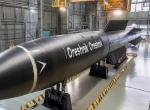India conducted five nuclear tests over two days on May 11 and 13, 1998, and declared itself a state armed with nuclear weapons. Since then, India’s nuclear deterrence has been effectively operationalised. With a pacifist strategic culture steeped in Gandhian non-violence, India is a reluctant nuclear power. It shares borders with China and Pakistan, two nuclear-armed neighbours, with both of which it has territorial disputes. India had sought but had been denied nuclear guarantees and had no option but to acquire nuclear weapons. India believes that nuclear weapons are political weapons, not weapons of warfighting. Their sole purpose is to deter the use and threat of use of nuclear weapons.
India’s nuclear doctrine is built around the concept of ‘credible minimum deterrence’ and a ‘no first use’ posture. As a corollary to its ‘no first use’ posture, India has declared its intention of launching massive retaliation following a first strike on India. Consequently, India follows a policy of ‘deterrence by punishment’ through a ‘counter value’ targeting strategy aimed at inflicting unacceptable damage, as against a ‘counter force’ strategy aimed at destroying the adversary’s nuclear forces.
Over the last decade and a half, some analysts have questioned the desirability of absorbing punishment in a first strike. The BJP’s manifesto for the 2014 elections to Parliament had promised to review the doctrine; however, Narendra Modi, the BJP’s candidate for the post of Prime Minister, was quick to announce that India’s ‘no first use’ pledge will not change.
India’s nuclear force structure is based on a land, sea and air-based triad: Prithvi I & II SRBMs and Agni-I to IV IRBMs manned by the Missile Groups of the Indian Army; nuclear glide bombs under-slung on Mirage 2000 and SU-30 MKI fighter-bomber aircraft of the Indian Air Force; and, in due course, SLBMs on SSBNs with the Indian Navy. While INS Arihant, the first indigenously designed SSBN, is undergoing sea trials at present, the second SSBN is reported to be under construction.
India has willingly abjured the use of ‘tactical’ or ‘battlefield’ nuclear weapons as these are inherently destabilising. Tactical nuclear weapons are mainly employed against armed forces targets in the TBA (tactical battle area) and tend to lower the threshold of use due to the proclivity to ‘use them or lose them’. These also involve complicated command and control mechanisms, enhance the risk of unauthorised and accidental launches and are complex and costly to manufacture and maintain.
The total number of warheads that India needs for credible minimum deterrence in a no first use scenario, has not been articulated by the government. In the views of Indian analysts the requirement varies from a few dozen warheads at the lower end of the scale to over 400 warheads at the upper end. In terms of yield these range from 10 to 12 kilotons to megaton monsters.
After the Pokhran nuclear tests of May 1998, in which warheads based on both fission and fusion designs were tested, India claimed that it had acquired the capability to manufacture nuclear warheads with yields varying from sub-kiloton to a maximum of 200 kilotons. Notably, India’s nuclear capabilities are completely indigenous despite the stringent technology denial regimes and sanctions that India has been subjected to since 1974 when a ‘peaceful nuclear explosion’ (PNE) was conducted ostensibly for civilian purposes. While some of these sanctions have been lifted, many others still remain in place.
Unlike in China, which has an authoritarian regime, and in Pakistan, where the army calls the shots on key policy issues, India’s nuclear weapons are firmly under civilian control. The Nuclear Command Authority (NCA) is the apex body of India’s nuclear command and control system. The Political Council of the NCA is chaired by the Prime Minister. All policy decisions, including the decision to employ nuclear weapons, are vested in the Political Council. The Executive Council is headed by the National Security Advisor (NSA). It provides inputs to the Political Council for nuclear decision making and executes its directives.
The Chiefs of Staff of the army, the navy and the air force are members of the Executive Council, but India does not yet have a Chief of Defence Staff to provide single-point military advice to the government. It is imperative that the appointment of CDS be approved as early as possible. The Strategic Planning Staff provides secretariat support to the NCA and the NSA.
The Commander-in-Chief, Strategic Forces Command (SFC) advises the Chiefs of Staff Committee (CoSC) on all aspects of nuclear deterrence and exercises operational and technical control over the nuclear forces. The nuclear delivery assets (ballistic missiles groups, fighter-bomber squadrons and the SSBNs) are raised, manned, equipped and maintained by respective Services HQ.
A chain of succession has been formulated. India has established a National Command Post (NCP) that will also act as a tri-Service operations centre during war. Rehearsals and joint exercises involving simulated retaliatory nuclear strikes are carried out periodically.
Adequate checks and balances for the safety and security of nuclear warheads, the prevention of unauthorised use and the minimisation of the possibility of accidental detonation have been built into standard operating procedures (SOPs) for the custody, storage, handling and transportation of nuclear warheads during peace time. Nuclear warheads are kept unmated and are stored separately from the launchers. The nuclear cores are in the custody of personnel of the Atomic Energy Commission (AEC) and the high explosive triggers are in the custody of the Defence Research and Development Organisation (DRDO).
With the ‘cannisterisation’ of some of the ballistic missiles carried on mobile launchers, it would be prudent to assume that limited mating of warheads would have taken place, but with permissive action links (PALs – electronic locks) having been installed to arm the missiles and the warheads. The launch platforms are manned by the armed forces and are not deployed till necessary. This reduces the risk of accidental and inadvertent launch and enhances peace time safety.
India has consistently been a strong advocate of total or universal nuclear disarmament. This policy, enunciated by the Nehru government after independence in 1947, did not change even after the Pokhran tests of May 1998 as nuclear disarmament is seen to be in India’s interest. Despite not having signed the NPT, the CTBT and the MTCR, India has complied with all the provisions of these treaties and supports the early conclusion of discussions on the FMCT.
India views these international treaties as important enablers of non-proliferation, arms control and disarmament measures that are necessary for regional and international peace and stability. India has voluntarily renounced further nuclear testing and has an unblemished non-proliferation record among the nuclear weapons powers.
India has invested deeply in strategic stability; this is reflected in the nuclear doctrine, the no first use posture, the force structure and the arrangements for command and control. India has never flaunted its nuclear weapons and has exercised immense strategic restraint despite grave provocation, particularly from Pakistan – by way of a quarter century old proxy war being conducted through state-sponsored terrorism.
The Indian government opted not to cross the LoC during the Kargil conflict in 1999. In the 2001-02 stand-off, though the armed forces were mobilised, India did not retaliate militarily despite a terrorist attack on the country’s Parliament in December 2001 and on the army’s family quarters at a base in Jammu and Kashmir. Since then, a major terrorist strike was launched by the ISI-backed LeT on multiple targets in Mumbai in November 2008. However, neither the Indian political leadership nor the people of India are likely to tolerate another major terrorist strike that is sponsored by the Pakistan government or any of its organs. Military retribution for such a strike will inevitably follow.
India is willing to discuss and institute nuclear confidence building measures (CBMs) and nuclear risk reduction measures (NRRMs) with both China and Pakistan, but its overtures have not been suitably reciprocated by either of them. In fact, China still does not recognise India as a nuclear power and refuses to discuss nuclear CBMs. The nuclear CBMs in place with Pakistan are cosmetic in nature and need to be upgraded to more substantive ones.
India’s conduct as a responsible nuclear power was recognised in the US-India Civil Nuclear Cooperation Agreement signed by Prime Minister Manmohan Singh and President George W. Bush in July 2005. Since then, India has signed and ratified an Additional Protocol to its safeguards agreements with the International Atomic Energy Agency (IAEA) and placed its nuclear reactors under international safeguards, with the exception of those that are committed to the nuclear weapons programme. India has now fulfilled all obligations necessary to be given membership of the NSG, the MTCR, the Australia Group and the Wassenaar arrangement as a state armed with nuclear weapons.
Published in Vivek: Issues & Options, March - April 2015 , Image Source: http://www.thehindu.com










Post new comment